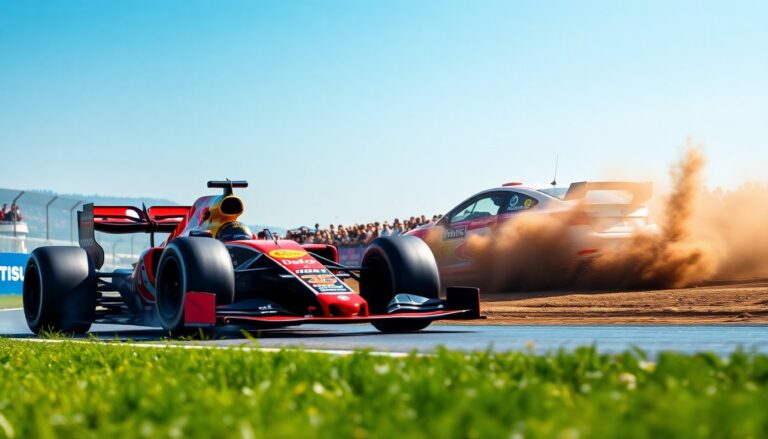Argomenti trattati
Motorsport transcends mere competition; it serves as a captivating spectacle that engages millions worldwide. The thunderous roar of Formula 1 engines contrasts sharply with the challenging terrains of rally racing, showcasing diverse challenges and excitement. This article examines the complexities of motorsport, highlighting various racing formats, the technological innovations involved, and the strategic elements that contribute to success.
The different forms of motorsport
A wide array of motorsport events exists, each governed by its distinct rules, vehicles, and fan bases. Notable formats include Formula 1, NASCAR, and rally racing. Each attracts a unique audience and presents specific challenges for drivers.
Formula 1: The pinnacle of speed
Formula 1 stands as the premier category of single-seater racing worldwide. Races take place on meticulously designed circuits, showcasing a blend of speed and cutting-edge technology. Teams allocate significant resources to research and development, crafting cars capable of reaching remarkable velocities while prioritizing driver safety. The driver plays a pivotal role in this high-stakes environment, where expertise in navigating tight corners and managing tire wear can be decisive in achieving either victory or defeat.
NASCAR: The American classic
NASCAR, or the National Association for Stock Car Auto Racing, represents a unique aspect of American motorsport, showcasing modified production cars racing on oval tracks. The strategy employed in NASCAR often revolves around drafting, where drivers closely follow one another to minimize air resistance, thereby enhancing speed. Additionally, pit stops are crucial, demanding precise timing and teamwork to maintain a competitive advantage.
The technology behind the speed
The realm of motorsport relies heavily on advanced technology. Engineers and designers dedicate significant efforts to developing components that improve both performance and safety. Innovations such as hybrid engines and sophisticated aerodynamics have revolutionized racing, challenging the boundaries of what can be achieved on the track.
Aerodynamics and design
A significant aspect of a racing car’s performance is its aerodynamic efficiency. The vehicle’s shape is meticulously crafted to minimize drag while maximizing downforce. This balance enables cars to achieve higher speeds and maintain stability at those speeds. Engineers employ advanced software to simulate airflow, allowing for crucial adjustments before physical prototypes are constructed.
Safety advancements
Safety is paramount in motorsport, and technological advancements have greatly enhanced the safety of racing over the years. Features such as the halo device in Formula 1, which protects drivers from head injuries, and reinforced cockpits in NASCAR exemplify the industry’s commitment to driver safety. Ongoing research into crash dynamics and materials ensures that vehicles can endure the extreme conditions of racing.
The strategic elements of racing
Speed is undeniably critical, but the strategy behind motorsport plays a vital role in achieving success. Teams must navigate several factors, including tire management, fuel consumption, and varying race conditions. Knowing when to push the limits and when to conserve resources can ultimately determine the outcome of a race.
Race strategy and tactics
During races, teams implement varying strategies based on track conditions and vehicle performance. They meticulously analyze data from previous laps to inform decisions regarding pit stops and tire selections. The ability to swiftly adapt to changing circumstances, such as weather fluctuations or incidents on the track, is essential. This level of strategic acumen distinguishes teams that consistently excel in competitive environments.
The psychological aspect
The mental toughness of a driver plays a crucial role in motorsport. High-pressure situations demand not only physical skill but also psychological resilience. Drivers must remain calm and focused while making split-second decisions that can significantly impact the outcome of the race. The pressure of competing at such high speeds can be overwhelming, making mental conditioning as essential as physical training.
The world of motorsport is a dynamic blend of speed, technology, and strategy. Various forms of racing, innovative technologies, and strategic complexities contribute to the allure of this exhilarating sport. As technology evolves and new talents emerge, the future of motorsport is set to be even more exciting.

